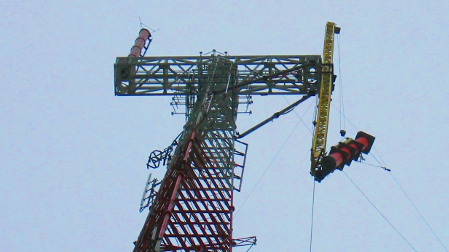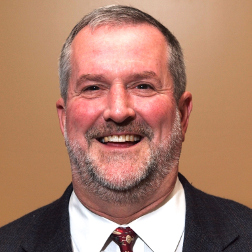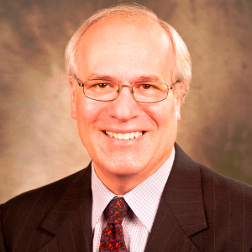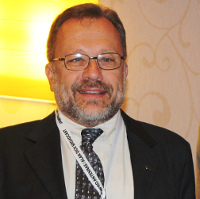Can Broadcasters Meet Repack Deadline?
ALEXANDRIA, VA.—The FCC’s “green flag” has been dropped and the great repack race officially underway. Although odds-makers haven’t put a big spotlight on this event, there’s a lot at stake, with some broadcasters facing the prospect of taking their stations dark if there’s even a small amount of trouble on the track and they don’t make the July 2020 “game over” date.

Close to 1,000 U.S. television stations will have some minor—in order for new owners of the broadcast spectrum being vacated to start their wireless network buildouts.
When the FCC first announced the initial timeline, many broadcasters and other industry figures decried it at as woefully inadequate for a project of this magnitude, and one fraught with so many uncertainties. However, the commission continues to hang tough, stating categorically that “after 39 months, no station will be permitted to operate on its pre-auction channel.”
So, what are the various players saying at this point in the great race: will it happen, or not?
Stephen Lockwood, senior engineer at Hatfield & Dawson Consulting Engineers, is optimistic.
“I really think we have a decent chance of meeting the deadline,” he said. “While the FCC may be granting STAs to some stations, I don’t believe that things are going to be as bad as some people have made out.”
UP TO THE CHALLENGE
Get the TV Tech Newsletter
The professional video industry's #1 source for news, trends and product and tech information. Sign up below.
While not everyone shares Lockwood’s optimism, those involved in the supply side of the equation (antennas, transmission line, transmitters and associated RF components needed for transitioning stations to new berths) appear ready for “crunch time.”
Bill Harland, vice president of marketing for Electronics Research Inc. (ERI), a Chandler, Ind.-based provider of antennas and installation crews, reports a high state of readiness.

Richard Fiore, president/CEO, Hitachi-Comark
“We started expanding our business as part of the T-Mobile agreement that we announced the year before last,” said Harland. “We’d already expanded our facility substantially, and we’ve hired additional people and trained them, and increased our inventory to handle the anticipated demand. We’re full speed ahead on meeting the timetable and well prepared to handle any sort of a flood of orders.”
Dielectric, another major supplier of antennas and RF components, has also prepared for “land rush” business.
“We’ve added people and product,” said Jay Martin, vice president of sales for the Raymond, Maine-based company. “We’ve been gearing up for this for a couple of years now and have opened a second [manufacturing] facility. While some groups have placed orders for all 10 phases, other groups are taking it by phase, and we’re trying to maintain incremental capacity for those people who wait until the last minute, because we know there will be those people.”
Transmitters shouldn’t be a problem either. Richard Fiore, president and chief executive officer at Southwick, Mass.-based Hitachi-Comark, says his company is prepared to handle requests from stations that have done their homework, as well as those who procrastinate.
“Our company has made significant investments in technology, inventory, and human resources in anticipation of the repack,” said Fiore. “We have reorganized our entire production facility for the manufacturing and testing of the Parallax solid-state transmitter product line and have over 700 Parallax solid-state 2kW power amplifiers in stock, with more on the way for UHF systems, plus hundreds of VHF amplifiers.”
Rohde & Schwarz, another supplier of transmitters, is also prepped and ready.
“Due to the significance and timing parameters of the repack, our broadcast and media division has been treating this event with the highest prioritization,” said Erik Balladares, vice president of Rohde & Schwarz North America. “With the full support of our global organization, we are able to fulfill the increased demand and number of orders, and with an expanded support team across North America and an exclusive partner and numerous contractors, we are able to provide an allencompassing installation service on the highest level.”
GatesAir also reports a high state of readiness.
“Our company is very focused on making sure we deliver to our customers in a timely fashion,” said Rich Redmond, chief product officer for the Quincy, Ill.-based company. “We’ve been continually hiring people in the factory. We’ve been working to ensure that our test processes are both thorough and efficient, looking at how you line up all your suppliers and the supply chain to make sure they can deliver in a prompt manner. We made sure we had multiple sources for such things as cables, certain metals, machine work and we’ve also been developing products to simplify installations.”
BROADCASTERS SPEAK OUT
TV stations have more at stake than anyone else, and—at least at this point in the repack process—optimism about the outcome is prevalent also, but perhaps a bit more guardedly.
“I feel confident that our stations are in a position to meet our deadlines,” said Brady Dreasler, director of television engineering at Quincy Media. “But the wild card in all this is the weather, especially for the northern latitude stations. We don’t have a year to work on things. We have, for some of our stations, a window of four to five-and-a-half months to get things done and if the weather doesn’t cooperate during the summertime that could be a major problem.”

Harvey Arnold, vice president of engineering, Sinclair Broadcast Group
Harvey Arnold, vice president of engineering at the Sinclair Broadcast Group, is equally upbeat.
“We would like to be optimistic about the repack schedule being met,” he said. “If we get cooperation between broadcast community, the FCC, the equipment manufacturers and the tower guys—and no bad weather or accidents—we just may do it. We might fall short in some markets, but we’re going to try. I’m really optimistic. We’re going into it with positive thinking.”
THE COST
Aside from the weather, virtually everyone polled cited another issue that could muddy the track—problems with FCC reimbursement to stations. There are actually two concerns: a shortfall in funds earmarked for reimbursement and, directly related to the this, hesitancy by the FCC—at least initially—in fully meeting station reimbursement requests.
From the get-go, many broadcasters and legislators viewed the original Congressional repack funding allocation of $1.75 billion as inadequate and the figure has increasingly been denounced as “unrealistic.” Citing an anticipated funding gap in excess of $250 million, last July, Rep. Frank Pallone, Jr. (D-NJ), Ranking Member of the House Energy & Commerce Committee, introduced the Viewer Protection Act, with the goal of adding another $ 1 billion to boost the funding level to $2.75 billion. Last month, Pallone was joined by the chairman of that committee, Rep. Greg Walden (R-Ore.), in pushing for an even bigger repack kitty—$3 billion. (Walden’s recommendation for this largesse was seconded by NAB CTO Sam Matheny during January Congressional testimony in the aftermath of the EAS Hawaiian missile alert scare.)
The potential shortage of funds has prompted the FCC to initially offer only partial reimbursement to stations wanting to order equipment and services. Bill Meintel, a partner with Meintel, Sgrignoli, & Wallace, feels this could offset efforts to keep the repack’s various phases on track. “It looks like there’s probably not enough money to fully reimburse stations at the moment, and the Commission is going to have to go to the Hill and get more money,” he said. “Whether they get any is another matter. There are stations out there that don’t have the money to repack unless they get fully reimbursed. That could really slow things down.”
The NAB’s Executive Vice President of Communications, Dennis Wharton, also acknowledges that timely reimbursement is a critical factor.
“NAB is devoting enormous resources educating Congress and the FCC on the repack funding shortage,” said Wharton. “Our top priority remains ensuring that all TV and radio stations are fully reimbursed for repack expenditures and we are cautiously optimistic that we will succeed. Fortunately, there is bipartisan support in both the House and Senate for a budget fix and NAB won’t rest until this issue is resolved in a manner that sustains a vibrant U.S. broadcasting system.”
Channel Change Challenges
According to information on https://rabbitears.info, after the repack dust settles, some 39 stations will be operating on Channel 14, probably the least favorite UHF allocation due to potential adjacent-frequency land mobile radio interference issues. About two dozen of these are newcomers to the 470–476 MHz frequency slot, and with the potential for interference to established services, shoehorning in additional players is not often easy.
One station drawing the Ch. 14 card was Washington, D.C.’s WETA-TV. Station officials turned to the Meintel, Sgrignoli & Wallace engineering firm to determine if the mandated move was feasible. According to Dennis Wallace, it was—provided that something could be done about the projected interference cases involving some 1,206 of the 2,136 land mobile licenses located within 100 km of the proposed WETA facility.
“It was very clear to us that this would be a very costly facility to implement, particularly with regard to mitigation of interference to land mobile facilities,” said Wallace. “Given the very short 39-month repacking process, it would be difficult to resolve all of those potential interference issues.”
A better solution involved petitioning for a change to Channel 31; however, this required four other stations to shift channels and/or operating power levels, as well as installation of better mask filtration at one of these.
Stephen Lockwood

Channel 14 issues aren’t quite as severe in the western part of the United States as they are in the east, due to the “wide open spaces” there, according to Hatfield & Dawson’s Stephen Lockwood.
“There are some Channel 14 reassignments out here in the northwest, but these are tame compared to what’s happening in the eastern part of the country,” he said. “Most of the Channel 14 issues we’ve seen have been resolved fairly easily, although a few have required changes to multiple stations.
Other repack issues of a different sort haven’t been so easy, according to Lockwood. “We have had to resolve a couple of situations where disparate partners have entered into channel sharing,” he said. “For example, you might have two stations sharing a channel, whose target audiences have different geographic distributions. Situations such as this can be a bit challenging when designing a facility modification, because the needs of both parties have to be taken into account.”
James O’Neal
For more information on the repack, visit TV Technology's repack silo.
